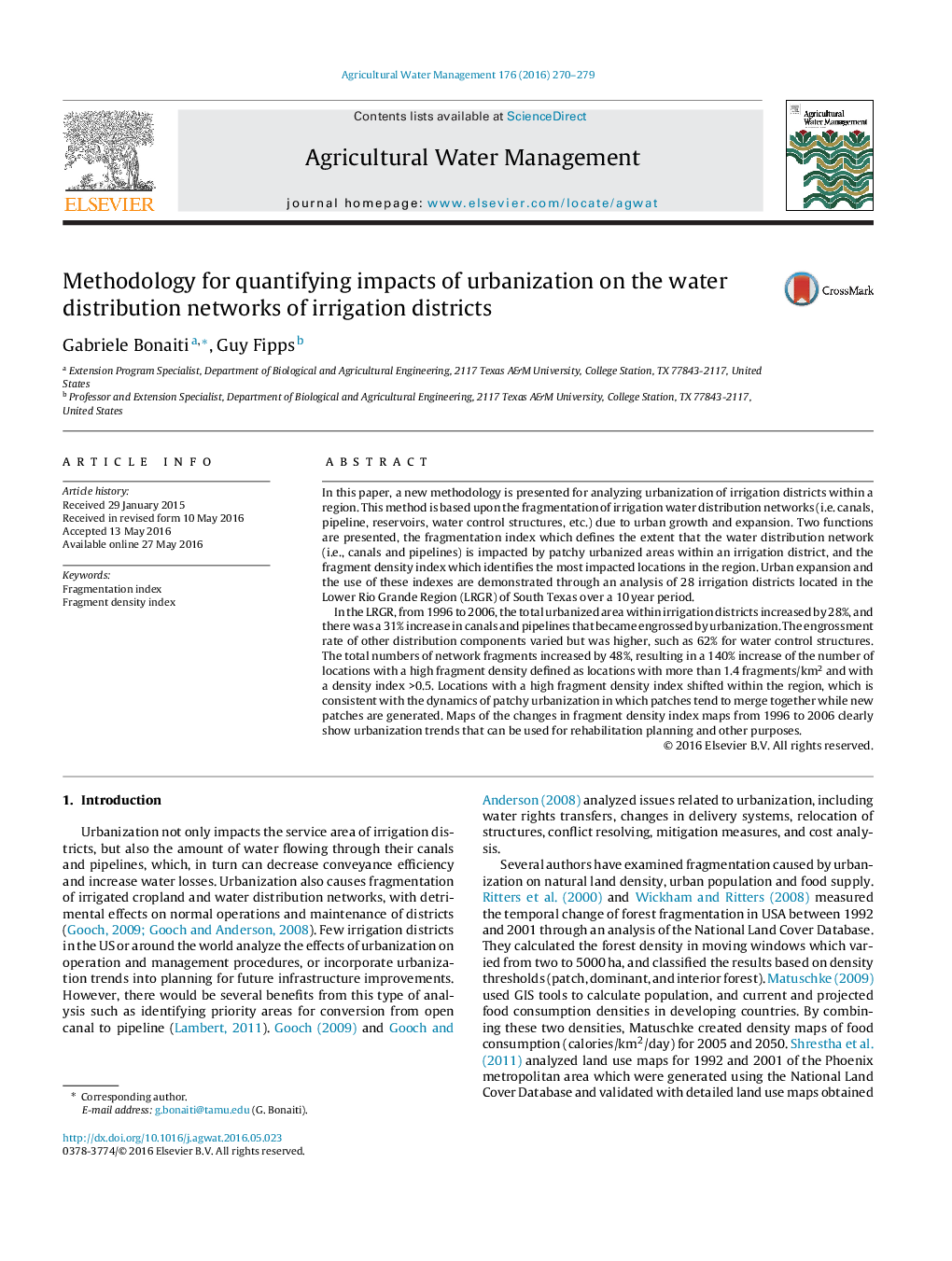| کد مقاله | کد نشریه | سال انتشار | مقاله انگلیسی | نسخه تمام متن |
|---|---|---|---|---|
| 4478256 | 1622904 | 2016 | 10 صفحه PDF | دانلود رایگان |
• A new methodology is presented for analyzing urbanization of irrigation districts.
• A fragmentation index quantifies the extent that the distribution network is impacted.
• A fragment density index identifies the most impacted locations in the region.
• Use of indexes is demonstrated through an analysis of 28 districts in Texas.
In this paper, a new methodology is presented for analyzing urbanization of irrigation districts within a region. This method is based upon the fragmentation of irrigation water distribution networks (i.e. canals, pipeline, reservoirs, water control structures, etc.) due to urban growth and expansion. Two functions are presented, the fragmentation index which defines the extent that the water distribution network (i.e., canals and pipelines) is impacted by patchy urbanized areas within an irrigation district, and the fragment density index which identifies the most impacted locations in the region. Urban expansion and the use of these indexes are demonstrated through an analysis of 28 irrigation districts located in the Lower Rio Grande Region (LRGR) of South Texas over a 10 year period.In the LRGR, from 1996 to 2006, the total urbanized area within irrigation districts increased by 28%, and there was a 31% increase in canals and pipelines that became engrossed by urbanization. The engrossment rate of other distribution components varied but was higher, such as 62% for water control structures. The total numbers of network fragments increased by 48%, resulting in a 140% increase of the number of locations with a high fragment density defined as locations with more than 1.4 fragments/km2 and with a density index >0.5. Locations with a high fragment density index shifted within the region, which is consistent with the dynamics of patchy urbanization in which patches tend to merge together while new patches are generated. Maps of the changes in fragment density index maps from 1996 to 2006 clearly show urbanization trends that can be used for rehabilitation planning and other purposes.
Journal: Agricultural Water Management - Volume 176, October 2016, Pages 270–279
